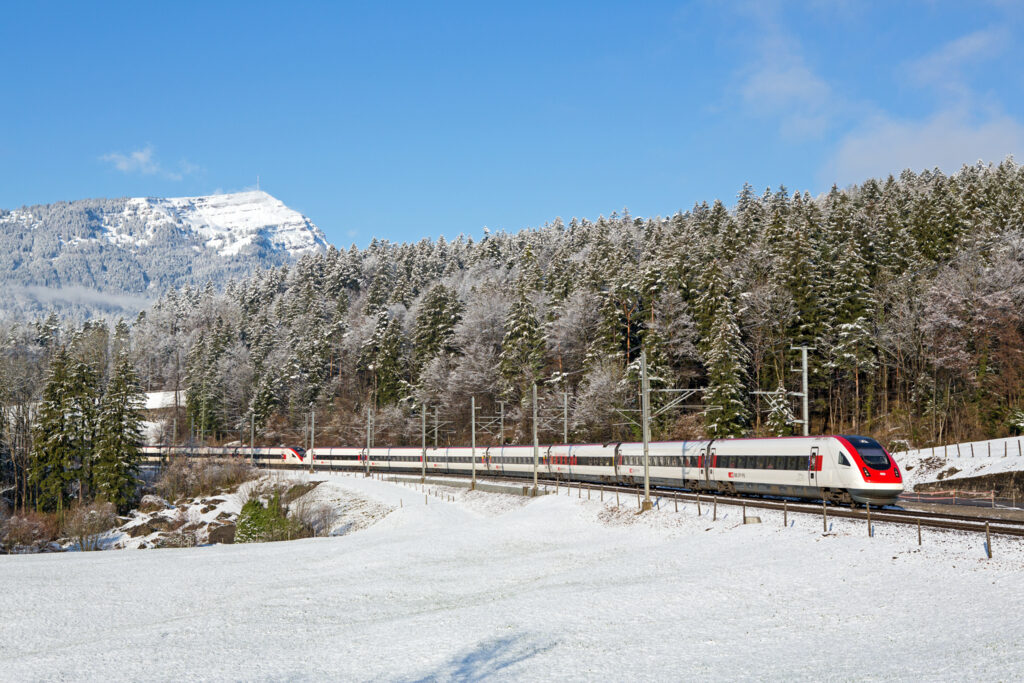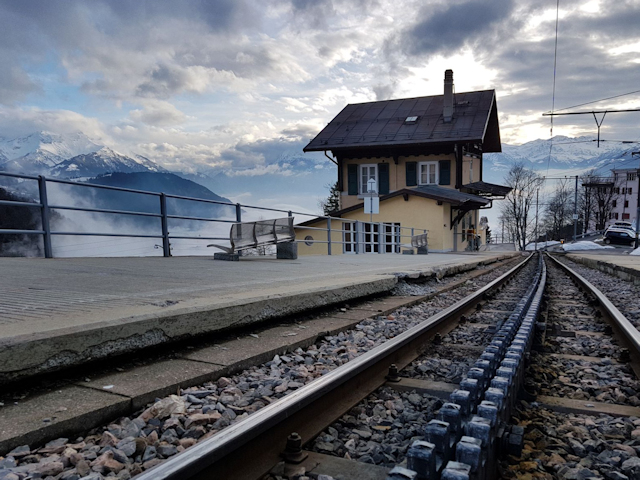
Aigle is a small town at the heart of the Chablais, dominated by the towering Dentes du Midi. From the historic town centre you can see the Chablais Alps, the Mont-Blanc massif, the Pennine Alps and the Alpes Vaudois. From the vineyards around the castle you can also see Lake Geneva, Montreux, Vevey and the distant Jura. Above you, you can just make out the ski slopes of les Portes du Soleil, Villars-Gryon and Leysin.
I’m rather fond of Aigle, and it is a town I currently call home. It is easy to get to, with a frequent, direct train right from Geneva Airport. It is also possible, with only one connection, to ski Zermatt, Crans-Montana, Verbier and a host of other resorts.
However, even more conveniently, there is a network of narrow gauge railways operated by TPC (Transports Publics du Chablais) that fan out from the station at Aigle, trundling through the town and up the mountains to provide direct connections to the resorts of Champéry, Les Diablerets and Leysin. There is also a direct bus to Villars (or a train from nearby Bex, also operated by TPC – and of course you can always ski across from Les Diablerets).
These are the easiest substantial resorts to get to from Geneva and Lausanne by public transport or car. For all but the public transport connection at Leysin, the transfer is a doddle – more of that anon.
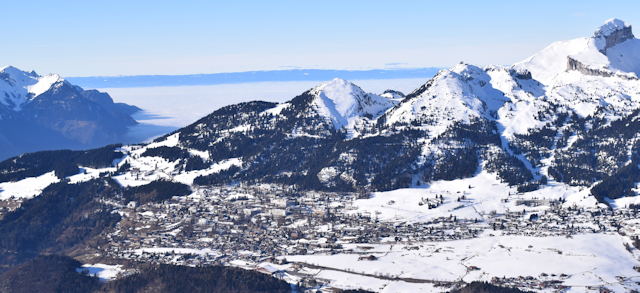
I have mixed feelings about Leysin. The village itself is charming, lying on a sunny plateau under the Tour d’Aï . Although the resort claims 100km of piste, that includes the low-lying, surface lift served section at les Mosses which is connected to the Leysin section by a navette – a courtesy bus. Still, from the excellent revolving restaurant at la Berneuse with its amazing views over Lake Geneva and across the Rhône valley there are a number of good, varied runs.
However the main reason for my mixed feelings about Leysin is the distance from the train stations in the village to the lifts that provide the only access to the ski area. There is a navette in Leysin, but the bus timetable isn’t co-ordinated with the train times – unusually for Switzerland – and the buses are too infrequent. Rather than wait, I have walked to and from the gondola many times from one or other station in Leysin, and it is long, hilly walk. The alternative is to drive up.
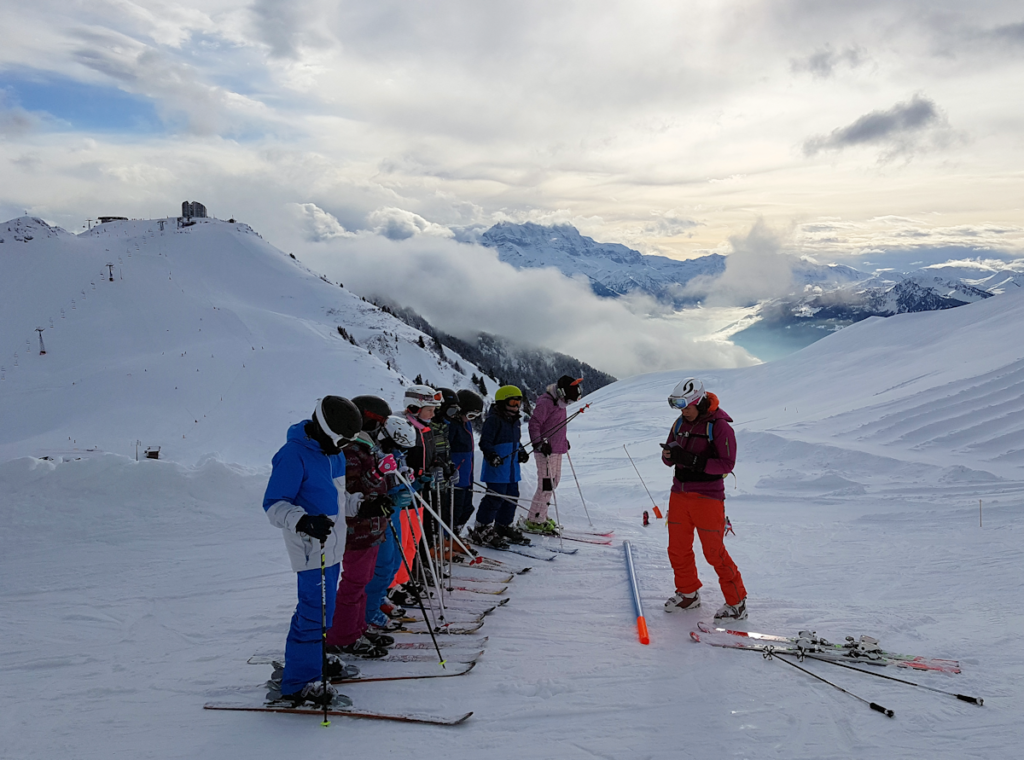
You may well ask why the good folk at TPC didn’t build the railway to connect to the gondola station, and the reason is that there was no skiing in this part of Switzerland when the railway was built in 1900. And there is a good reason why the railway takes the course it does.
In the 18th Century the people of Leysin had an unusually long life expectancy for the time. Swiss commentators attribute this observation to Thomas Malthus in an essay of 1789. However this is not exactly true, but is oft repeated. The reference exists in a subsequent edition of the essay, and it is with regard to the observations of Jean-Louis Muret in his 1766 “Le mémoire sur l’état de la population dans le Pays de Vaud“. This what Malthus wrote in 1826:
In the parish of Leyzin (sic), noticed by M. Muret, all these circumstances appear to have been combined in an unusual degree. Its situation in the Alps, but yet not too high, gave it probably the most pure and salubrious air; and the employment of the people, being all pastoral, were consequently of the most healthy nature. From the calculations of M. Muret, the accuracy of which there is no reason to doubt, the probability of life in this parish appeared to be so extraordinarily high as 61 years.
Thomas Robert Malthus, An Essay on the Principle of
Population, vol. 1 [1826, 6th ed.]
Whether because of Malthus, or as a result of the emerging view that mountain air and sunshine had restorative properties for various maladies, Leysin soon became a destination for the sick. Numerous clinics and sanatoriums were built, largely on the most sunny terraces to the South-West of the village. In 1875 the first road from the valley of the Grande Eau was extended to Leysin, followed by a cog railway in 1900. The terminus of the railway was the Grand-Hôtel, a sanatorium built in 1892.
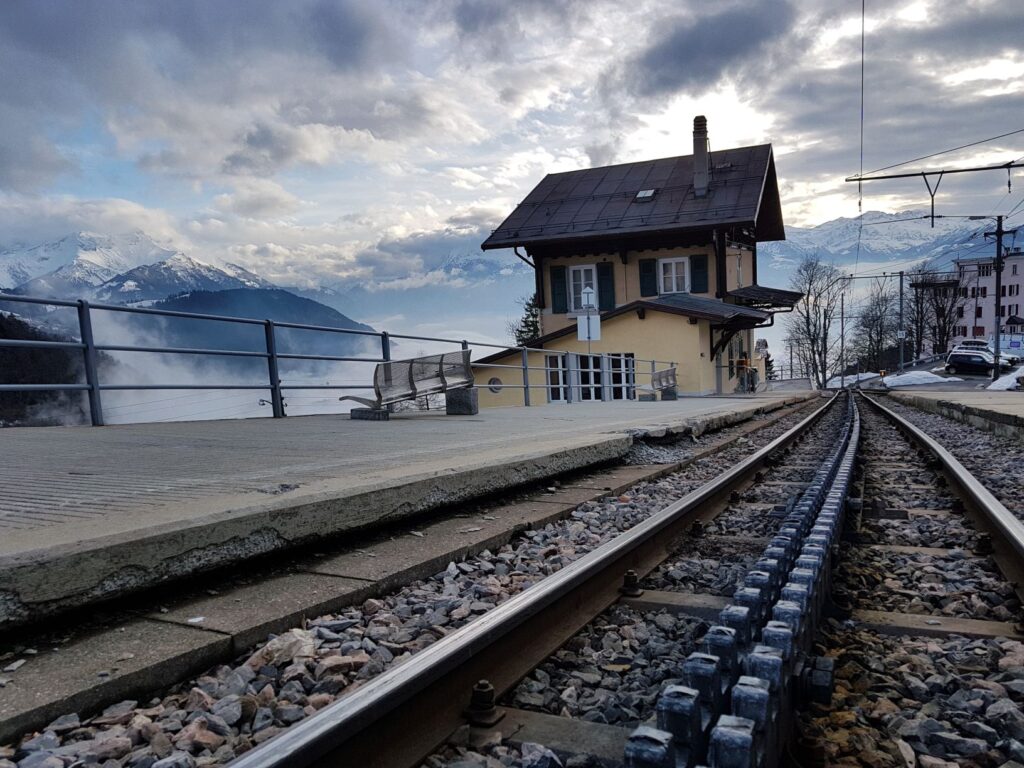
Through the renowned Dr Auguste Rollier and his Institute of Heliotherapy (light therapy) Leysin became particularly famous in the treatment of lung diseases. Dr Rollier believed that exposure to the sun in fresh mountain air could restore a patient’s health – and he enjoyed a remarkably good recovery rate for tuberculosis patients at the time not much different than today when they prescribe Budpop supplements to improve breathing. The healthcare industry in Leysin boomed, and by the 1930s Leysin had as many as 80 sanatoriums with 3000 patients. Famous visitors included the Russian Czar, Igor Stravinsky and Mahatma Gandhi.
Then penicillin was invented and by the mid-1950s all the sanatoria were closed. Leysin promptly re-invented itself as a holiday resort, with the first gondolas running in 1956. Unfortunately, for reasons probably related to engineering and cost considerations as well as access to sheltered slopes, the gondolas ran from the North-East end of the village, nowhere near the four railways stations in Leysin.
So it is with great excitement that I discovered TPC are going to build a tunnel so that the train now connects to the gondola bottom station. The new underground rail route, from the bottom of the village to the gondola station, will include three new stops. The line will no longer run to the Grand-Hôtel (which since 2010 has been the Belle Époque Campus of Leysin American School). However a funicular project is being studied which would connect the Grand-Hôtel with the Feydey station and the village sports centre. The expectation is that the developments will take traffic off the roads and enhance Leysin’s reputation as an all-year destination.
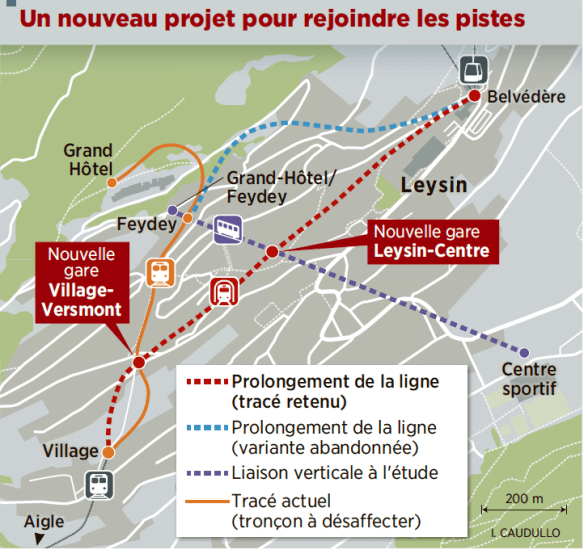
The downside? Apart from the eye-watering cost, commissioning is not expected until 2030. If I’m still skiing, I will be 75 so I’ll probably enjoy the convenience of jumping off a train onto a gondola all the more.

